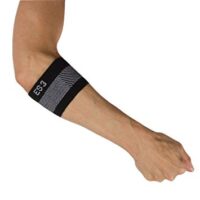Elbow Pain Causes, Diagnosis, and Effective Physiotherapy Management
Introduction
Elbow pain, a common ailment affecting people of all ages, can disrupt daily activities and diminish quality of life. This article, informed by physiotherapist insights, explores the various causes of elbow pain, emphasising the importance of early diagnosis, accurate assessment, and tailored physiotherapy interventions.
Understanding Elbow Pain
Elbow pain can stem from various sources, ranging from tendinopathy to nerve compression. Identifying the root cause is key to selecting the most effective treatment.

Common Elbow Pain Causes
Tennis Elbow and Golfer’s Elbow:
Tennis Elbow and Golfer’s Elbow, caused by overuse or strain of the elbow tendons, are prevalent among athletes and those engaging in repetitive arm movements. More info: Tennis Elbow, Golfer Elbow.
Olecranon Bursitis:
Olecranon Bursitis is inflammation of the bursa near the elbow joint leads to pain and swelling.
Youth Elbow Pain:
Conditions like Thrower’s Elbow and Little League Elbow are common in young athletes due to repetitive stress. More info: Youth Arm Pain
Neck-Related Arm Pain:
Issues in the neck, like Cervical Radiculopathy or Neck Arm Syndrome can manifest as elbow pain.
Muscle-Related Pain:
Muscle strains and repetitive strain injuries (RSI) often present as elbow discomfort.
Medical Conditions:
Stress fractures, fibromyalgia, and various types of arthritis can also lead to elbow pain.
Recent Research Insights
Recent studies highlight the effectiveness of targeted physiotherapy in treating elbow pain. Techniques such as manual therapy, specific exercises, and other therapies have shown promising results in reducing pain and improving function.
The Role of Physiotherapy in Treating Elbow Pain
Physiotherapy plays a crucial role in the management of elbow pain, focusing on alleviating discomfort and restoring normal function.
Key Physiotherapy Interventions
- Personalised Exercise Programs: Tailored exercises to strengthen and stretch the affected muscles.
- Manual Therapy: Hands-on techniques to improve joint mobility and reduce pain.
- Pain Management: Use of modalities like ice, heat, and ultrasound to manage pain and inflammation.
- Education and Advice: Guidance on activity modification and ergonomics to prevent recurrence.
The Importance of Early Intervention
Early physiotherapy intervention can prevent the progression of symptoms and facilitate a quicker return to daily activities.
When to Seek Professional Advice
Consult a physiotherapist or doctor if you experience persistent or worsening elbow pain. They can conduct a comprehensive assessment and develop a personalised treatment plan.
What to Do?
If you’re experiencing elbow pain:
- Rest: Avoid activities that exacerbate the pain.
- Apply Ice: To reduce swelling and pain.
- Seek Professional Help: A physiotherapist can provide expert advice and treatment.
Conclusion
Elbow pain, though common, can be effectively managed with physiotherapy. Understanding the cause, seeking early treatment, and adhering to a personalised care plan are vital for a successful recovery.
For more detailed information on elbow pain causes and treatments, visit PhysioWorks, where you can find resources and professional advice tailored to your condition.

























































